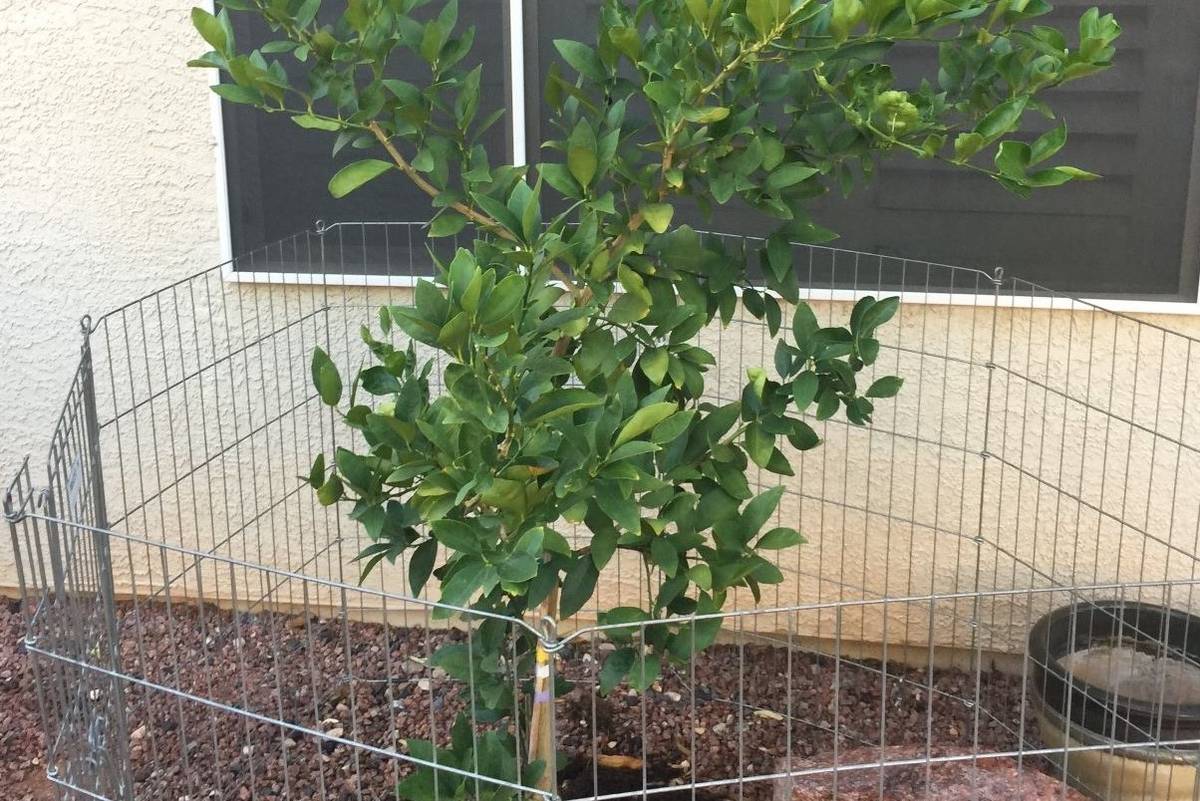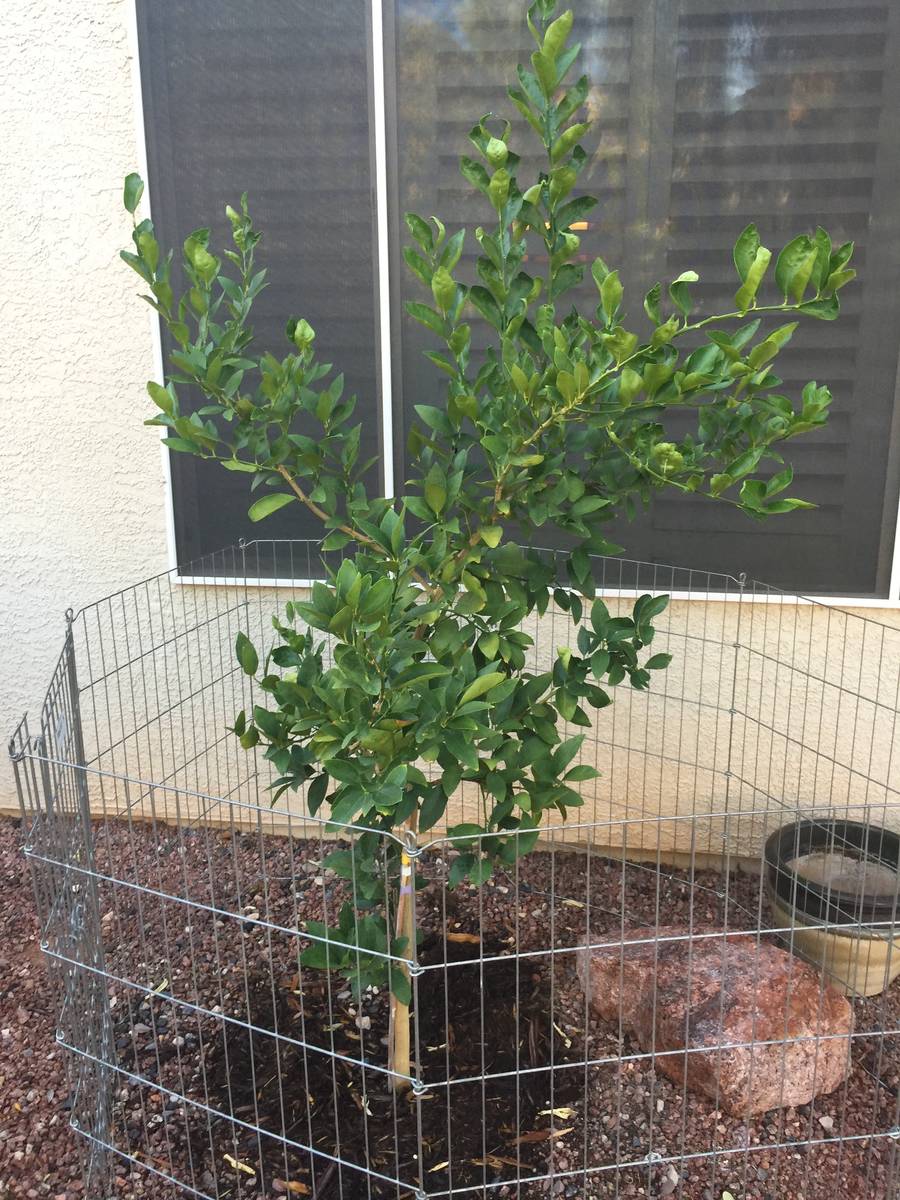Tropical, subtropical plants take a lot of care to flourish in desert
There is a trend of growing plants that take a lot of care to flourish in the desert. These include tropical or subtropical plants for permaculture “food forests” like avocado and sapote and tender citrus. Unfortunately, these plants and others struggle in our heat or cold, high-intensity sunlight, poor soils, low rainfall, hostile soils and low humidity.
Some of these plants grow better in the desert than others. There are lots of plants that flourish in our desert environment without much care. Many of these plants come from the desert Southwest.
It is OK to grow plants that do not belong here from a horticultural perspective, but remember that when we plant something, we are committed to caring for it when things are not the best for its performance and survival. As I tell students, when we elect to grow landscape plants that perform best in other environments, it costs us more time and money to take care of them.
These plants might require additions of soil amendments, specific care or placement in a landscape where they can grow better. If you are OK with that, then plant whatever you want. Just because a plant is offered for sale does not mean it performs well here in any location we chose.
I am a lazy gardener. I prefer to select a majority of plants that do not require a lot of care and money unless I really want them for a specific reason. I am careful how many exotic plants I select and grow that do not belong here because I realize the commitment I must make in time and money for them to flourish. Instead, I follow the desert mantra: “Have a good reason for growing a plant.”
Q: I am so confused about what is a good tree or shrub to plant since so many nurseries recommend trees and shrubs that you say do not grow well in Las Vegas. What type of hedge do you recommend that can provide privacy and not poisonous?
A: It is not that nurseries supply plants that do not grow here. They do. They respond to what people want or they think people might want. Bottom line, the homeowner has a responsibility to select the right plant, choose a good location for planting it and be aware of its limitations. That requires knowledge of the plants before buying.
The nursery has a responsibility as well. This is asking questions of homeowners and guiding them of the possible problems they might have growing this plant here. They sell solutions for plant problems. But all of this requires knowledge about the plant and its limitations.
Yours sounds like a two-part question to me: a plant that provides privacy and is not toxic. About 60 percent of our landscape plants are toxic. Some plants like oleander and castor bean are more toxic than others.
If this concerns you, it will require quite a bit of home study on your part. Visit the University of California website at https://ucanr.edu and search “safe and poisonous garden plants.”
The second part, which plants to use for a privacy hedge, can also be difficult to answer. For privacy, the plants must be evergreen, not drop their leaves. Several questions need to be answered before looking: What mature size is needed? Can I use desert plants for this purpose? Where is this privacy hedge located in the landscape?
The mature size of these plants dictates how much water they use, their spacing at planting time and how many are needed. If this privacy hedge should be 8 feet tall, there is no need to buy plants that reach 20 feet tall because plants that are too large waste water.
Their mature height dictates their planting distance and how many are needed. There is no reason to buy 10 plants when five will do the job.
Privacy hedges of plants that have a round shape are planted slightly closer than their mature height. If the mature height is 8 feet, then plant them 5-6 feet apart for privacy. If their mature height is 20 feet, then plant them 15-16 feet apart.
Plant them close to their mature height from homes and walls. If these spacings do not work in this location because the area is too small, be creative and think of alternative ways for creating privacy.
South and west sides of homes and walls are frequently more scorching than north and east sides. These two types of locations, called microclimates, may require two types of plants. Desert plants are probably a better choice on the hotter south and west sides than the cooler north and east sides.
Plants located close to buildings and walls are in a different microclimate than those plants out in the open. Privacy screens made out of plants, out in the open and surrounded by rock, frequently favor desert plants more than nondesert plants.
Many plants react to cold weather by losing their leaves. Some plants drop their leaves at less freezing temperatures than others. The terms semi-deciduous or semi-evergreen mean the same thing, but they are code for “these plants will drop their leaves if it gets cold enough.” That might be a disaster if privacy is a necessity.
Q: I am training a xylosma plant into a single trunk tree. The tree was planted in September from a 24-inch box. Before it got cold it started shedding leaves. Is this normal? Last spring all the leaves fell off but that was after a February snow. If not normal, what might be the cause?
A: This plant has a long history of success in Las Vegas climates when the soil is properly amended at planting time and covered with woodchip mulch, not rock. It can handle open areas in full sun but not stark locations. Many so-called shrubs like this can be pruned into small trees, called patio trees, because of their small mature size.
Dropping leaves — when it should not — can mean trouble. Let me explain. Shiny xylosma is categorized as a nondesert, evergreen shrub that grows to about 15 feet. We know it can handle a minimum temperature down to 20 degrees Fahrenheit but drops its leaves if winter temperatures reach the teens. In the past, it was used as a formal or informal hedge planted close to the house.
Xylosma normally drops its leaves in the teens but can drop its leaves if shocked for some reason like an unexpected snow or drop in temperature in spring. All evergreen plants shed their leaves at some point, but most of that is gradual or somewhat seasonal and not all that noticeable.
Make sure this plant is not watered daily and has good water drainage from around its roots. With poor drainage or watering it daily in the summer, this plant might develop a root rot disease and start dropping leaves when temperatures are still warm. This plant is not overly sensitive to having “wet feet,” but if surrounded by rock this disease could start to develop in a few years due to the development of poor drainage.
Remove the rock and incorporate compost into the top 4 or 5 inches of the soil. Then cover an area around the plant with about a 6-foot diameter of woodchips, 3 to 4 inches deep.
Q: A recent post by the master gardeners of Southern Nevada stated to plant Mexican elderberry this month. Do you know where I can find this? I have not had any luck finding it through local suppliers.
A: Since Mexican elderberry is a Southwestern desert plant with edible fruit, it is a good candidate for a local “food forest,” but it can be hard to find. Once found and it starts producing fruit, it is easy to propagate from seed.
It is native to the Southwest but typically found at the cooler high elevations and wet canyons near perennial streams. It grows well in our heat but prefers cooler temperatures and moist soils, so it is considered “mesic” in its water needs rather than the true “xeric” nature of desert plants.
This shrub can reach 20 feet tall so make sure you give it plenty of room for growth unless it is pruned. Make sure the soil as well amended at planting time for this plant. It is winter deciduous so it will not make a good privacy hedge but very good for attracting wildlife including birds.
Bob Morris is a horticulture expert and professor emeritus of the University of Nevada, Las Vegas. Visit his blog at xtremehorticulture.blogspot.com. Send questions to Extremehort@aol.com.



















